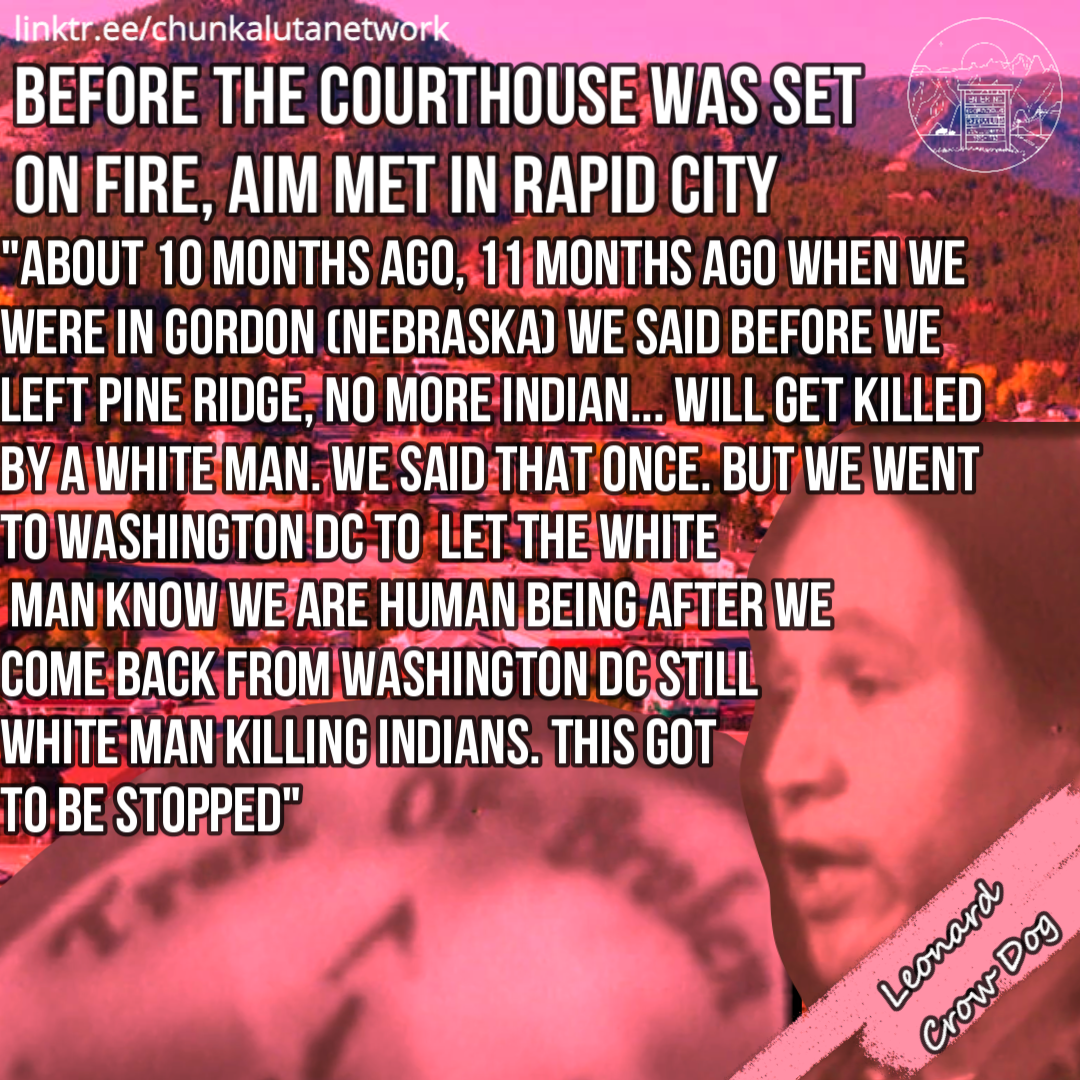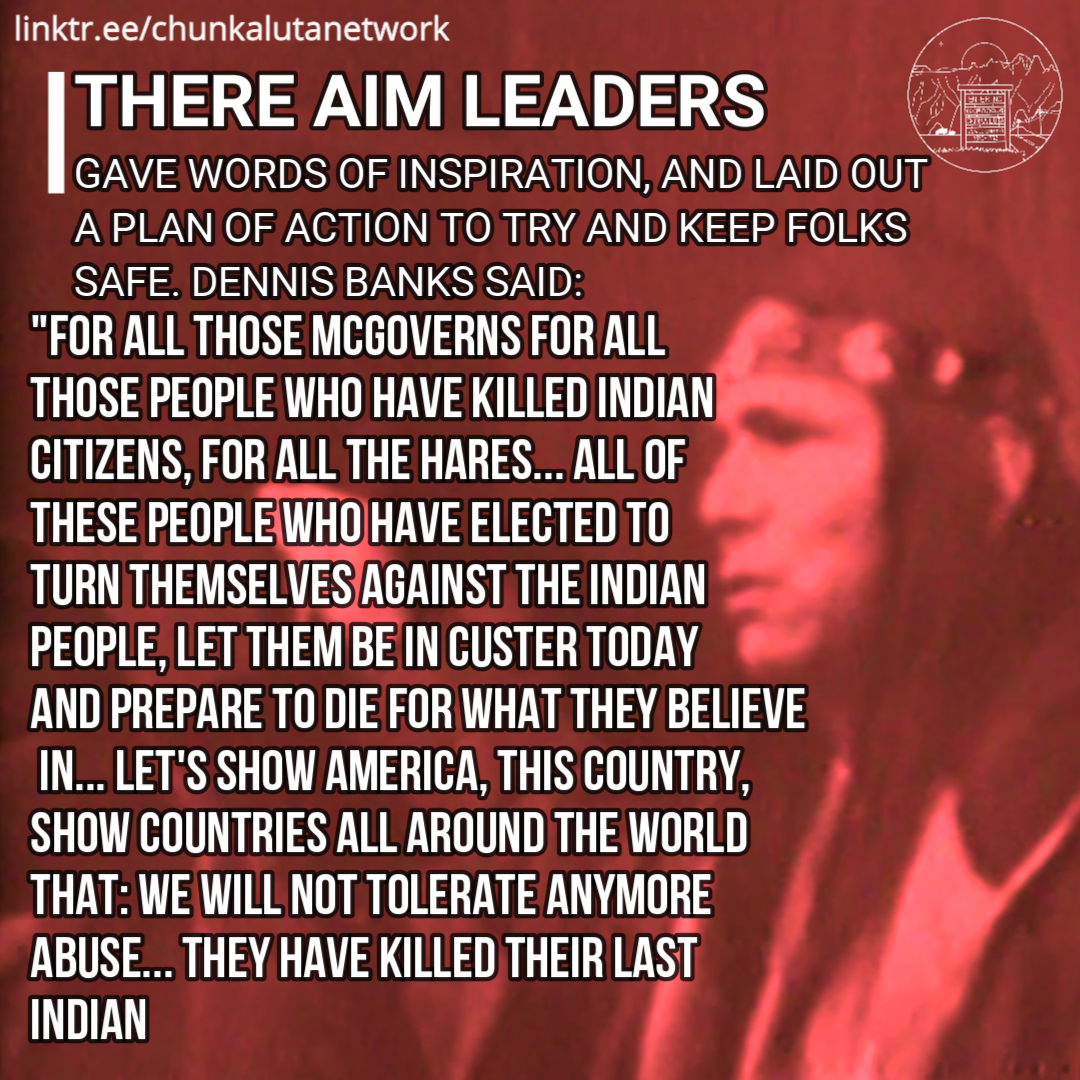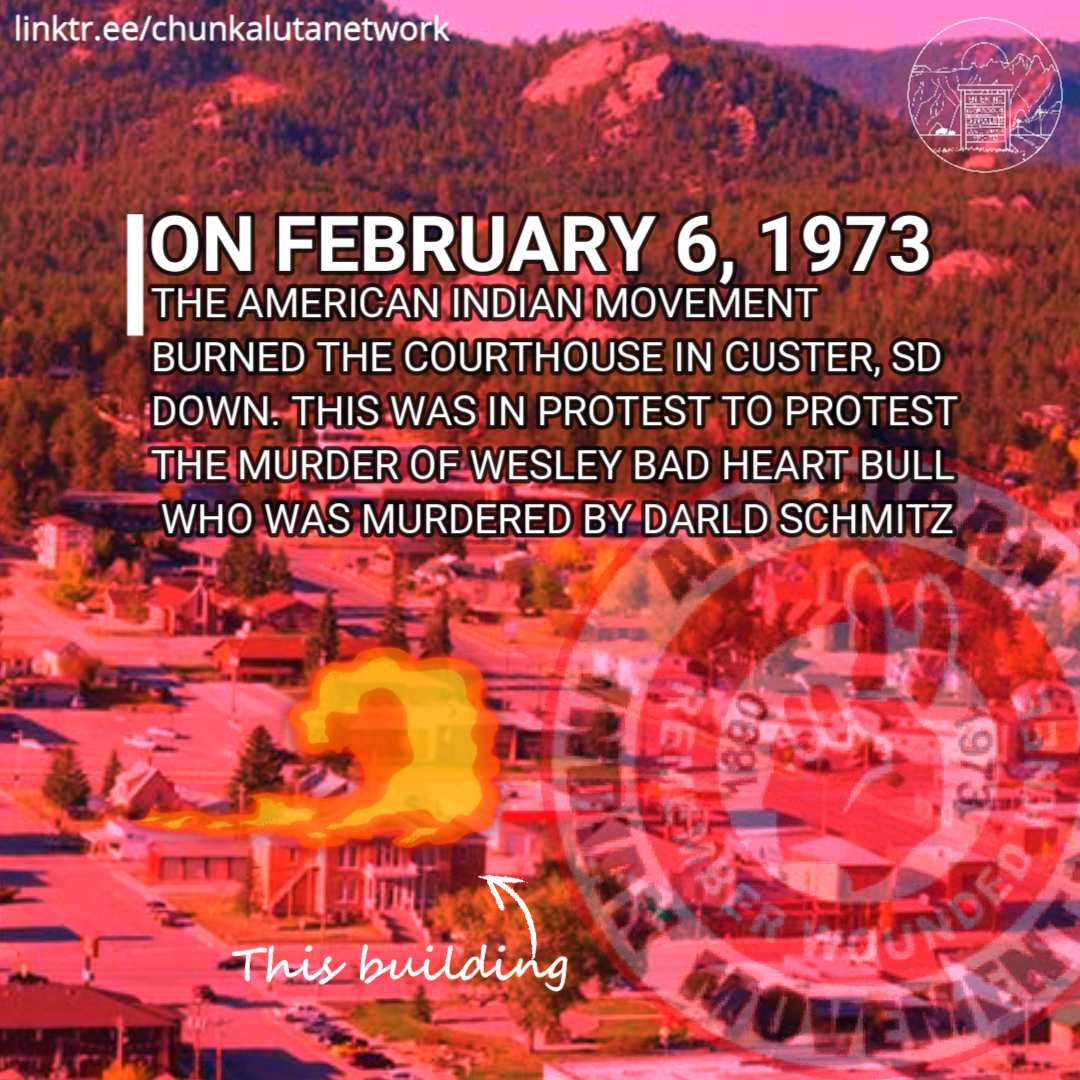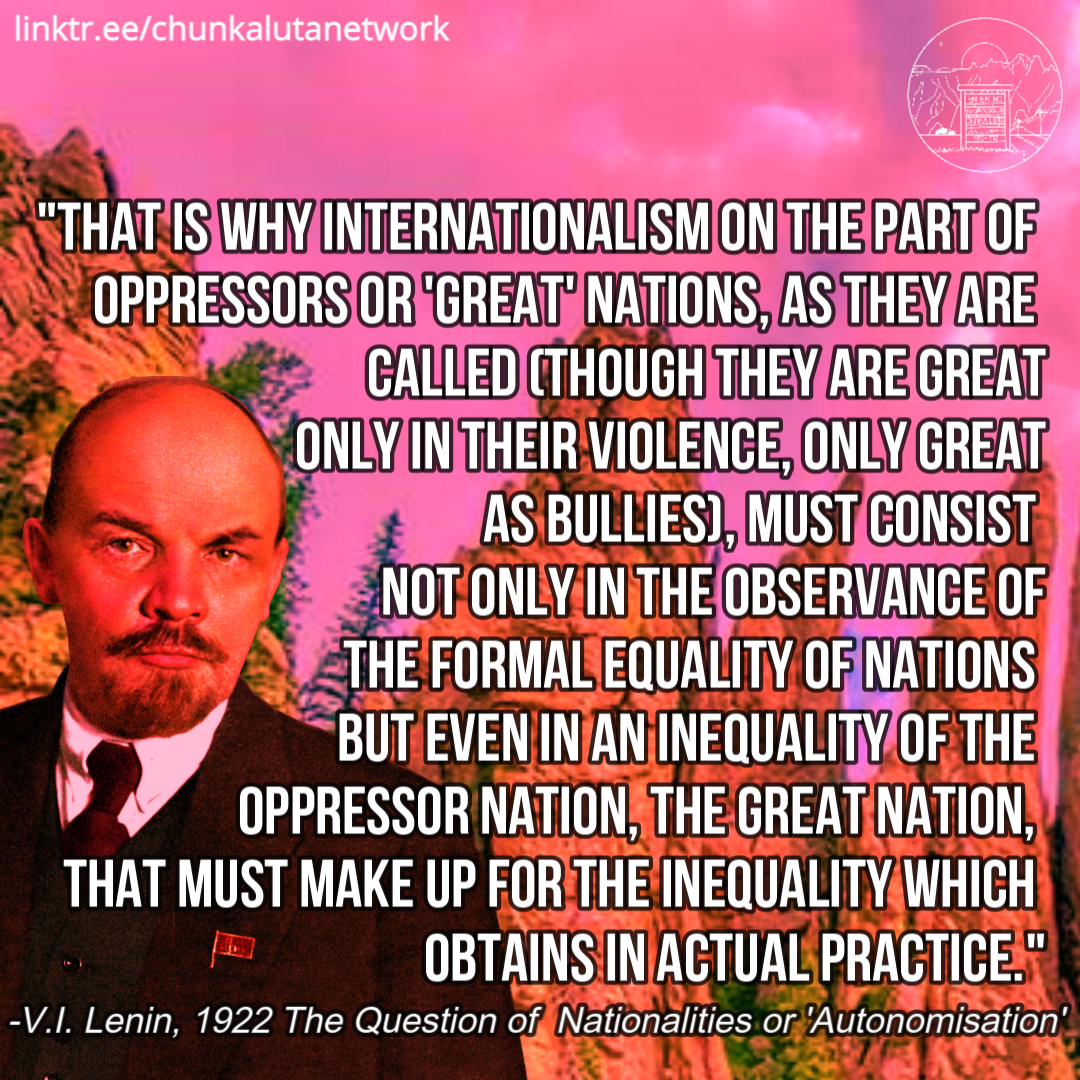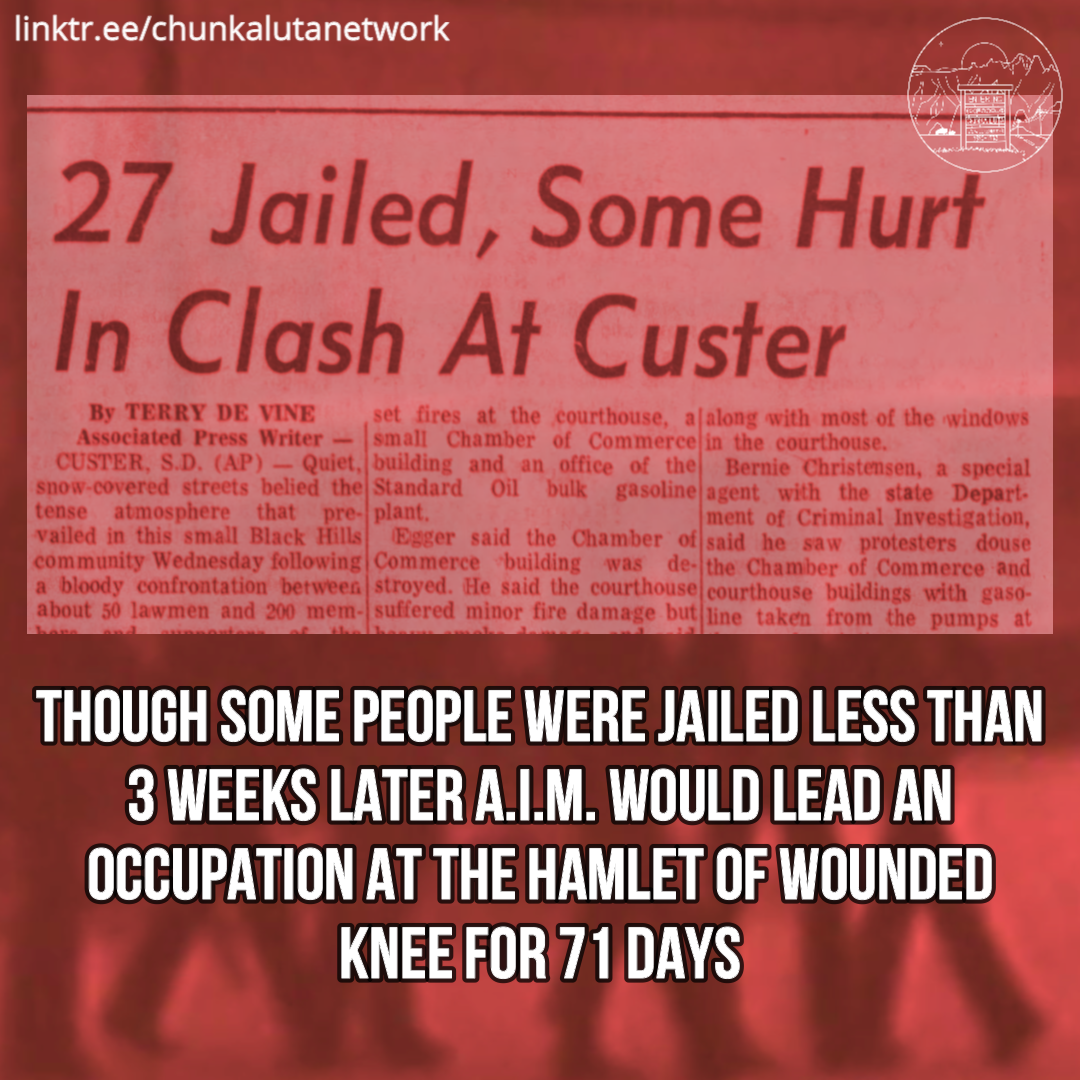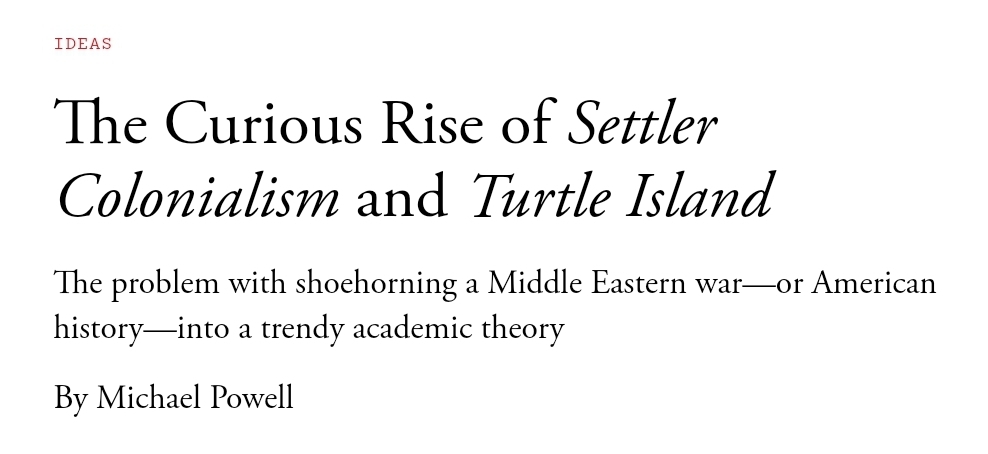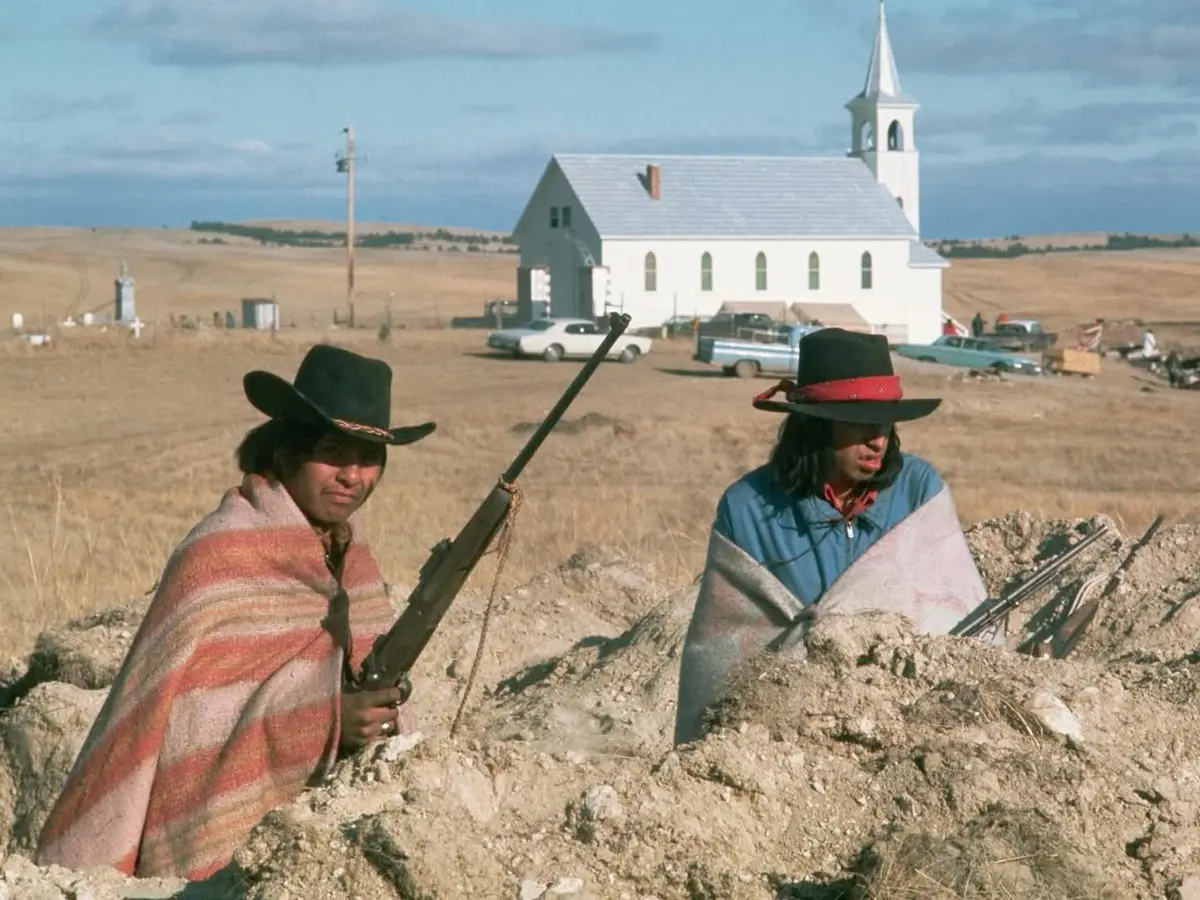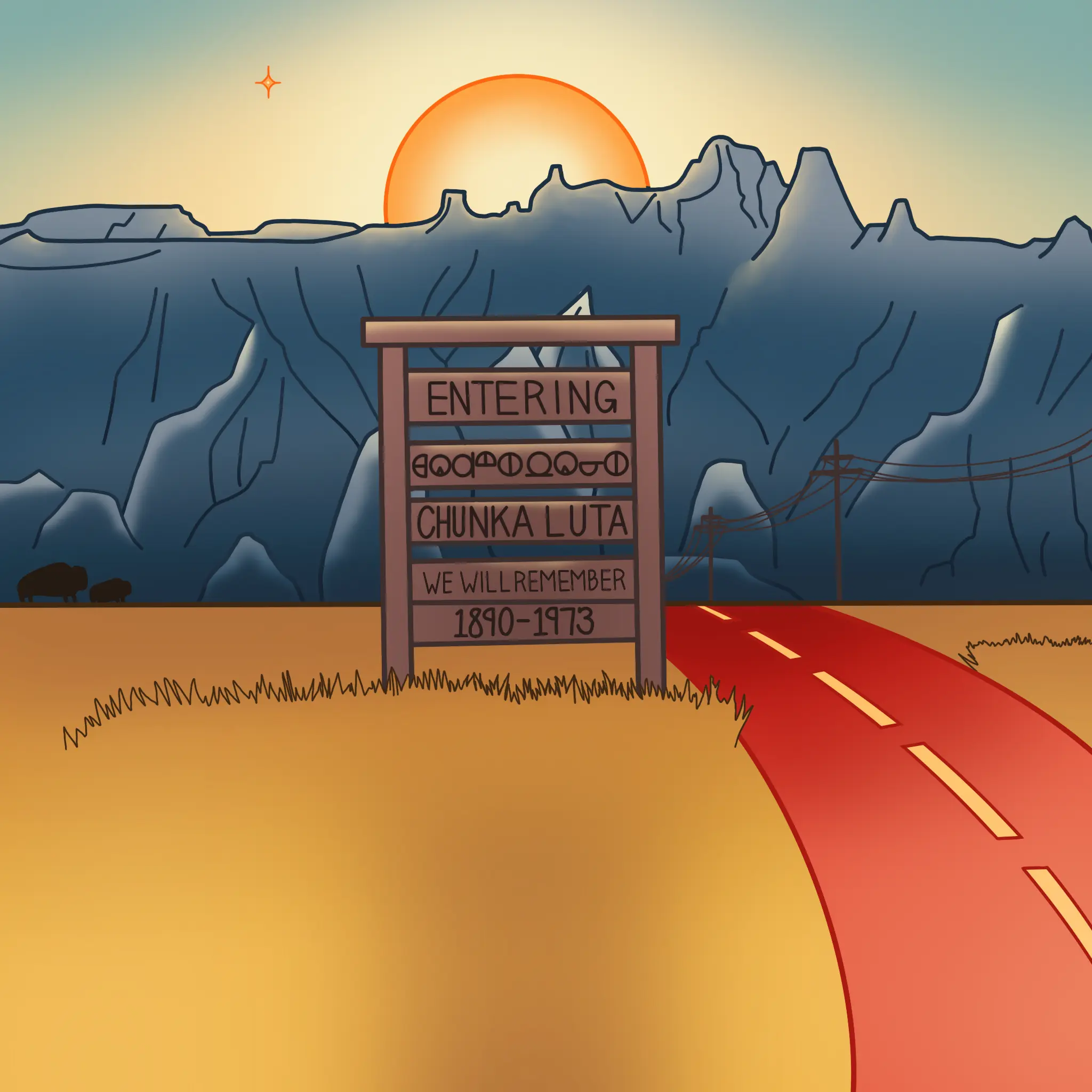Kaffe: The author of the CPUSA article I responded to the other day has issued a response, here it is with my in-between responses. I had to transcribe the response from an image with some software so there might be mistakes, please check the source first if something looks weird, it could be my mistake.
Recently, a twitter user by the name of @probablykaffe released a criticism of my article "Questions of Settler-Colonialism in the U.S." on the party website (https://lemmygrad.ml/post/5450487). The criticism was posted on Lemmygrad, a Marxist-Leninist substitute for Reddit founded in 2019 in response to Reddit's crackdown on Marxist content on their platform. I don't plan to respond to all points made, as I do not believe that is productive and would lead to a back and forth conversation that I do not have the energy for. However, I do see this as an opportunity to elaborate on some points within the article a little further. This is not a formal response, nor is this representative of the Communist Party USA.
It should be noted that my article is meant to be a sort of starter in the analysis of settler-colonialism in the U.S. I absolutely could have gone more in-depth and technical, however my main focus of this article was to be as accessible about this theory as possible while still giving enough theoretical substance. And 1 think 1 largely succeeded on that front considering all the positive reception the article has received online and within the party itself.
With that said, let's get into the critique and address the most important points. Keep in mind that their criticism wlill be quoted at-length, as they did with my article, in order to keep full context when addressing arguments.
The piece posits that "regular" Colonialism intends to exploit the Indigenous population, while settler-Colonialism intends to expropriate and remove them. That both of these behaviors exist in all colonial structures is ignored. The settlers of Rhodesia not only violently occupied land used by Africans, they also exploited African labor by continuing to deny them access to resources except through wage labor or zero-wage labor, slavery. Whether exploitation or expropriation is used is actually an evolution in the relations between Indigene and the Occupation. Under English colonization, the Pequot people were first exploited for their productive capacities, then removed from their lands where a significant portion of them were sold into slavery to be exploited away from their land-relations. Smashing the Pequot came about because they stood in the way of settler control over regional trade, a condition that developed from relations where Pequot and English traded in mutually beneficial relations.
This is absolutely a fair criticism which I take full responsibility for. I should've been more clear in my article that, while settler-colonialism is distinct from franchise colonialism, it still does feature the aspect of exploitation of indigenous populations, especially in the monopoly capitalist context we exist in with the U.S. today. I will say, however, that they do make an interesting dichotomy between expropriation and exploitation of indigenous lands and peoples. It should be noted that the expropriation of indigenous lands, and the horrible structures of oppression and atrocities that result from this process,are an integral part to what makes settler-colonialism distinct from franchise colonialism. They do not choose and pick whatever at a whim, expropriation is a fundamental characteristic of settler-colonialism, and I feel that is negated with their statements.
Kaffe: Agreed, though I do say exploitation and expropriation are relationships that evolve (as in, not chosen by a thinking entity) in a colonial context. I agree that the way I wrote about it made it seem like I think these are two distinct modes, rather than processes under constant expression of varying degrees.
The first part of this segment tries to answer the chicken-egg of Colonialism and Capitalism by putting one before the other, when only in certain situations is that apparent, and broadly, these are co-constitutive processes.
No, no I don't. I clearly make it known in this section that these two processes happened simultaneously and fed into each other.
Kaffe: You said: "It must be stressed that settler-colonialism laid the basis for the further development of capitalism as a mode of primitive accumulation, and settler-colonialism only came into existence due to the development of capitalism and the pursuit of profit." It's this latter part of the statement that I take issue with considering the English settlers in Ireland preceded capitalist relations in Ireland and were sent to police expropriated territory from the Irish. I want it clear that Settler-Colonialism does not need Capitalism, or vice-versa, but if your statement is directly about Turtle Island, I agree. This relates to all colonization that require hired policing (French in Vietnam, Kanaky). This means we have to piece out the difference between a Franchise Colony, a Settler-Colony, and a Settler-State. Permanence of settling pushes a colonial regime towards being dominated by settler interests, and potentially these interests imposing themselves over the sovereignty of their mother country, developing into a Settler-State with independently exercised interests (but tied generally to Imperialism, as with "Israel" and "Australia"). What makes a settler is the (continued) act of staying (including reproducing). In terms of studying the political economy of a colony, there is use in distinguishing frontier settlers and colonial police from others, but frontier settlers who are in it for the money or colonial expansion replace themselves spatially with new settlers who are there to stay. The Occupation's polity is subject to evolution but all of these moving parts remain settlers in the ongoing Occupation, outside of a new Colonialism (chattelization, apartheid) that distinguishes "arrivants", that population will be made of settler classes until the Occupation is abolished.
Incorrectly posits that the class of settlers is distinctly those who have taken land. Says nothing about their relationship as continued occupiers, and says nothing about their relation to the broader network of property relations that is the Settler-Colonial Capitalist system. These frontier-persons are simply one way in which the Occupation came to control resources. The more common manner towards the "end of the frontier" (an event that was claimed by said entity, not found in reality) was sending the standing army, men such as the so-called "Buffalo Soldiers" or George "Hang Them All" Wright and his Military Division of the Pacific. In fact, nearly all of those who were profiting off of settler expansion were members of the colonial militias and later US standing army.
I do mention in my article that indigenous land is occupied, but you are correct that I should've gone alittle more in-depth regarding that specific characteristic. Regarding your point, however, settlers, as I define in my article, are those who "[are] outside these land-relations, and plays an active role in negating them. This does not mean that one has to personally enforce colonial laws, rather it means that they directly benefit from the participation in the destruction of these land relations
Indigenous struggles for landback and decolonization are all about rebuilding land relations on occupied land, and gaining sovereignty over the land they currently inhabit. This is something that I will go more in-depth over later in the article. The settler's job is to destroy these land relations, occupy the land that indigenous people inhabited, and stop indigenous people from their struggles to rebuild land relations. Occupation is an inherent characteristic of settler-colonialism.
Kaffe: "The settler's job is to destroy these land relations, occupy the land that indigenous people inhabited, and stop indigenous people from their struggles to rebuild land relations." Which is why settlers as a class continues into time as long as the occupation exists, they are expected to and primed to continuously reject Indigenous land-relations. One isn't a settler just because they decide to act in that way, it's not a choice, getting their reproductive resources from the settler-regime is enough for them to reflexively defend it. Anyone can choose to break out of their class relations (Class Suicide, Marooning), but only in so far as they are bound by a decolonizing community.
It's extremely disingenuous to compare the estimated (by Ortiz) total population of the Americas in 1492 to the population of Indigenous people in the US in 1900. The founding of the US in 1776 is closer to us now in time than it was to Columbus's landing. The total native American population in 1900 was some 4-5M people, it is now up to some 45M people. In the US alone it went from some 240k to some 7 million-people today. It's estimated that over 100k Indigenous people in the US (claimed territory) died from 1860 to 1900 due to colonial policies such as boarding schools (40k children dead or missing from the start of the schools to today). Settler-Colonialism was not just the theft that causes death, but the continued exclusion that prevents populations from recovering to pre-disaster levels. This continued exclusion raised the white/settler population of the US by hundreds of millions over this period.
This part just makes no sense. Columbus' voyage marked the start of settler-colonialism in the USA and the genocide of the indigenous population. Of course l'm going to show how disastrous settler-colonialism as a structure of oppression is to my people by showing how it's affected my people's population. This is such an absurd point.
Kaffe: My first issue was the comparing of two different population segments through time. The next issue is that for the disaster that was Columbus's landing, the peoples oppressed and imprisoned by the "13 Colonies" and later the US were free communities/nations until the English took land or otherwise subjugated them to the rule of England. That was the point at which they became Indigenous (a colonized population).
Contradictions make the system living. There are classes of Indigenous and "arrivant" populations that can benefit from the motions of settler-colonial development. These are contradictions we well understand when we are talking about "regular" Colonialism and Neo-Colonialism, yet for some reason we have to revise such notions when speaking of Settler-Colonialism. The development of one's class can contradict the development of their nation. Though it is not wise to limit such notions to "race", which is a product of national antagonisms and not the source. Former slaves working to subjugate other Indigenous peoples including their own kin is one of many really existing contradictions that give Settler-Colonialism and Capitalism life
Keep note of this. Though it should be noted that Kaffe is using contradictions incorrectly here. The context is that I am trying to find a solid way to define being a socio-political citizen of the U.S. and what a settler is.
Most of this segment of the article is correct, however, reduced. For fear of contradiction (that give life), they'd like to argue that Indigenous people with government jobs are settlers. They are however, not settlers, even though they are in class relations antagonistic to decolonization and ultimately to the liberation of their nations. This contradiction exists because of the under-development of their nations due to Settler-Colonialism. The US government onboarding more and more Indigenous people is also a contradiction for itself, as writers like Red Nation have access to means of production to facilitate revolutionary study and spread it amongst the population. So too, did Fanon have the bourgeois education and employment, partially colonizing his own continent, but contradictorily gaining skills that eventually helped his people overthrow their colonizers.
In the previous quote, Kaffe relishes on how contradictions give life to our system, yet seems to believe that going so far as to say that social relations such as settler and indigenous aren't static and can change is too far. Saying that an indigenous person participating in the destruction of their own land relations therefore makes them a settler is a contradiction that Kaffe doesn't seem to like.
Kaffe: My opposition is with settler being applied to Indigenous people through splitting hairs in employment to avoid applying the label to all non-colonized people in a settler occupation. My position is that all of those Bordertown occupants are indeed settlers as reproducers of the settlement. Indigenous individuals still have national relations that tie them to Indigenous Liberation struggles, the contradiction of them being employed by the occupation could be described as dual Indigenous-settler relation, but since employment is situational and nations generally are not, it seems unnecessary to apply the term when economic class as a worker in the US describes enough. Especially since if we use Red Nation's definitions, even reservations are Bordertowns (history shows this to be quite literal in cases). If we are not to contradict RN, then we'd have to apply settler to all Indigenous people in the US. The other aspect is that limiting Indigeneity to essentially "social formations before colonization", makes it a lot easier to erase Indigeneity, for the colonizers to "write away" their problems by perpetually claiming the resistance illegitimate (which it already does).
Land-relations are not confined to reservations whatsoever. If that were the case, the Bolt-Decision would not even exist. As well, continued land-relations exist for all Indigenous communities, threat from the settler-society for performing such relations is ongoing. The NoDAPL protest would not have occurred because it does not cross existing reservation lines. Yet, the Oceti Sakowin rallied by the thousands to protect the water. This is a very confused point, which again relies on events-thinking to comprehend. White workers (in fact, all USians) in this one example, would continue to benefit by having more control over the global value of the dollar with access to fuel provided by DAPL. This is again contradictory for even the Lakota people on the Standing Rock Reservation. This leads to the broader contradiction, that US Imperialism relies on the continued subjugation of Indigenous national interests to provide high wages and excessive consumption to the vast majority of US workers. But again, using the corrected definitions, the idea that Indigenous land-relations are marginal and "vanishing" ignores facts like the US nuclear capable submarine base lying directly in a former Pequot village (whose refugees are in a nearby reservation). Also, notice that Gaza's fighters are predominantly refugees, which "descendent" is one of the ways Palestinian refugees are defined by the UN.
This point misunderstands what indigenous land-relations are, and confuses it for an indigenous connection to ancestral homeland. I will quote Nodrada at length here:
"They do not understand the social relation of Indigenous peoples to their homelands, which extends into the aspects of ecology, history, spirituality, etc. That is, Indigeneity as itself a social relation. Indigenous peoples explicitly refer to their nations and homelands as relations. Their relation to land is not to land as an abstract thing, but to specific spaces that are inseparable from their specific communal lives.
...
Identity and mode of life in communalist societies is specific to spaces, because keeping in the 'rhythm' of these spaces is a basic guiding logic of life. Because land is a relative, there was and is significant resistance among Indigenous peoples to the settler seizure of land and commodification of their non-human relative. The European bourgeoisie, meanwhile, was more concerned with what value could be extracted from the land, their worldview being based in abstract concepts of Right, Justice, Liberty and so on.
The faction in question does not understand setler-colonists as part of social relations which seek to negate that communal land social relation for concrete aims. They lack broad perspective, they only see society as a collection of atoms, falling into micro-categories, bundled together."
Here, it is clear that indigenous land-relations refer to the relations that indigenous people build towards the land they inhabit through the building of communal society and a common mode of life. This is integral to the definition of indigeneity itself, which is "a social relation defined by the persistence of long-standing communal links and Indigenous identities in a specific place."
The whole point of settler-colonialism is to destroy these land relations and drive the indigenous people off of their land. This is what happened when the indigenous people of the US were driven off of their lands and pushed into reservations. They were driven off of the land, their communal land links were destroyed and so too were the land relations. This is distinct from a connection to ancestral homelands, which is in essence the resistance to settler-colonialism, the struggle to rebuild land-relations in their ancestral homelands. If indigenous land relations were not vanishing and being destroyed, then there wouldn't be a struggle from indigenous communities against settler-colonialism. This is where occupation comes in. Occupation is about stealing and inhabiting indigenous land after the process of driving them off of their ancestral homeland, the exploitation of this land and indigenous labor, and the repression of indigenous peoples' attempts to rebuild their land-relations on this ancestral homeland.
Kaffe: Now here is something interesting. Land-relations are internal to a community. External factors, such a settlers, can only induce evolution within these communal relations. Land-relations are practices, the amount of time between practices of these relations is not relevant, as long as the community at some point can resume those relations. The reason they cannot resume is because of continued occupation. Rhythmic relations can be obstructed through non-human processes as well, the community then adapts according to their ongoing social processes, and such is the case with Colonization. While these aspects are components to how an Indigenous nation understands itself, it does not apply to their Indigeneity (status of being colonized). There should be no reason why Indigeneity is defined for Settler-Colonialism differently than other Colonial structures. The relationship of an imposed regime of one or many oppressor nations over oppressed nations. This definition allows for Indigenous nations to split (or merge) and form distinct communities during the duration of their colonization. Some of these communities are absorbed into the colony and put under a system of apartheid where they become vacillating "arrivants" in other Indigenous-Settler antagonisms (communities such as the so-called "Praying Indians" of 17th century New England). That is, arrivants are Indigenous too, but dislocated and/or atomized. We need definitions that account for many different social formations, and aren't limited to individual communities' systems of self-regulation. Communities have memories, and communities have lives larger than individuals, we must view these relations at the community level, ultimately.
I also brought examples in the original thread (tbf, in a later edit) of concrete land-relations continuing by shared practice with an example using Randy Lewis (Wenatchi). That's not an abstract "homeland" connection, but a communal connection between elder and youth in a place at a specific rhythm. I of course recognize that the land is relative, which is fully accounted for in saying land-relations are internal to a community and subject to evolution, none of which negates Indigeneity unless an internal trend is liquidationist.
Rest of the response:
As I said in the beginning of this response, I do not want to respond to all points made in the critique, as it would take forever and most of them come from a misunderstanding of my point, straight up lying about my positions, and a lack of reading comprehension. Most of these mistakes are almost obvious to most people. The ones that are not as obvious and require an elaboration of my arguments are the ones that I responded to here.
